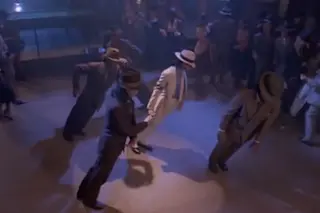In Michael Jackson’s 1987 music video “Smooth Criminal,” the legendary performer leans forward 45 degrees from a straight-up position — and comes back. It’s a feat that seemingly defies both physics and physiology, and the move has become another element of MJ’s aura of mystery.
Some type of cinematic or mechanical trick must be responsible, since most people can manage only a 20-degree forward tilt before toppling headlong. Yet Jackson performed the move live on tours around the world for years.
In a study published this week in the Journal of Neurosurgery, three scientists examine the so-called Antigravity Lean, not from a physics but from a physiological perspective. The three neurosurgeons, all at the Postgraduate Institute of Medical Education and Research in Chandigarh, India, combine in the article their knowledge of Jackson with data on spine biomechanics.
It’s been known for years how Jackson defied gravity. His shoes had a ...














